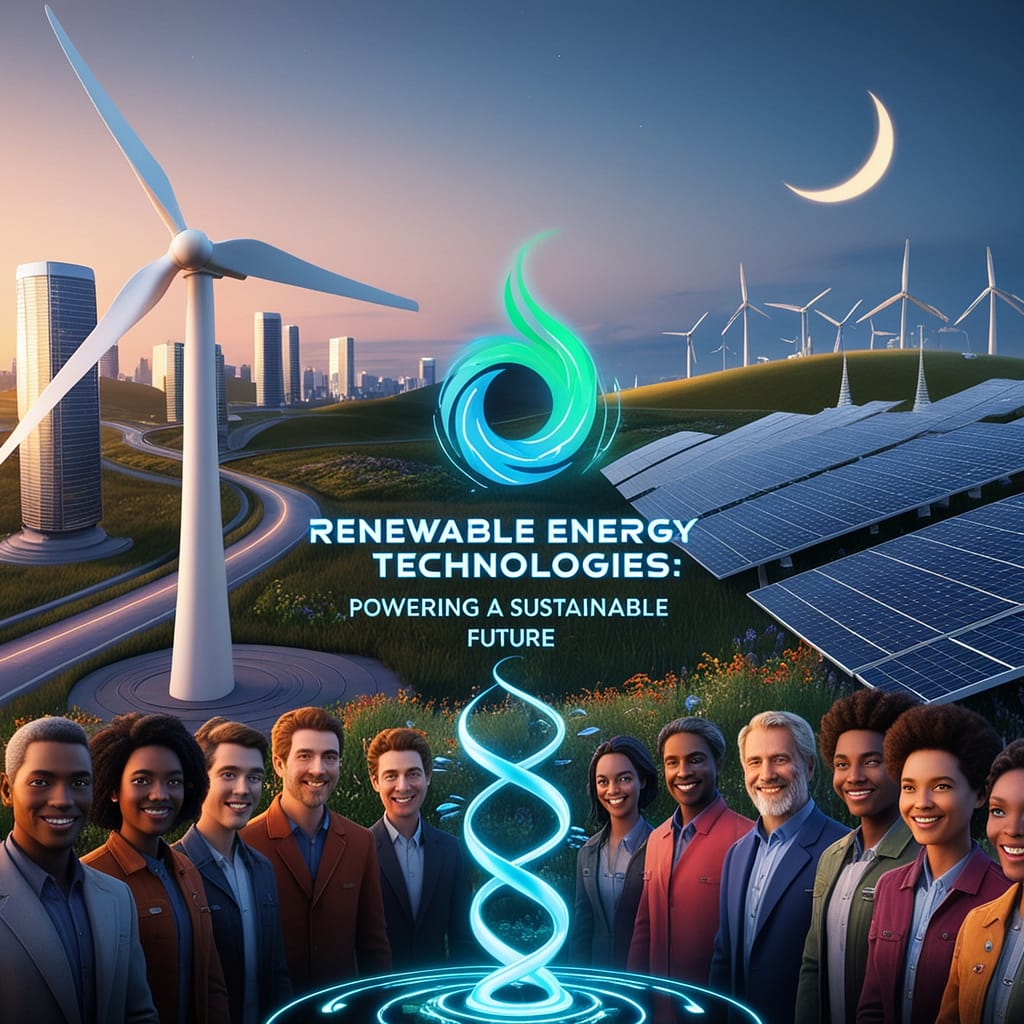As the world grapples with climate change and the depletion of fossil fuels, renewable energy technologies have emerged as a beacon of hope for a sustainable future. These technologies harness naturally occurring processes to generate energy, reducing greenhouse gas emissions and minimizing environmental impact. This article explores the various renewable energy technologies, their benefits, and their role in shaping a cleaner, greener planet.
1. Solar Energy ☀️
Solar energy is one of the most widely recognized forms of renewable energy. It harnesses sunlight using photovoltaic (PV) cells to convert light into electricity. Solar panels can be installed on rooftops, in solar farms, or integrated into building materials. Recent advancements have led to more efficient and affordable solar technologies, making solar energy a viable option for residential and commercial use.
2. Wind Energy 🌬️
Wind energy is generated by converting the kinetic energy of wind into electricity through wind turbines. Offshore and onshore wind farms are becoming increasingly common, with advancements in turbine technology improving energy efficiency and reducing costs. Wind energy is one of the fastest-growing renewable energy sources globally, providing significant power supply without emissions.
3. Hydropower 💧
Hydropower is the oldest and most established form of renewable energy, generating electricity by harnessing the flow of water in rivers or dams. It ranks as one of the largest sources of renewable electricity worldwide. While large-scale hydropower projects are common, small-scale hydro systems can also provide energy for local communities, contributing to energy diversity and security.
4. Biomass Energy 🌿
Biomass energy involves using organic materials—such as wood, agricultural residues, and animal waste—to produce heat, electricity, or biofuels. Biomass can be converted into biogas through anaerobic digestion, which can be used for heating or as a vehicle fuel. This renewable energy source helps reduce waste while providing a sustainable energy alternative.
5. Geothermal Energy 🔥
Geothermal energy harnesses the heat from the Earth’s core to generate electricity and provide direct heating. This technology is particularly effective in regions with high geological activity. Geothermal power plants provide a consistent energy supply, regardless of weather conditions, making it a reliable source of renewable energy.
6. Ocean Energy 🌊
Ocean energy is an emerging field that utilizes the vast energy potential of the ocean. This category includes tidal energy, wave energy, and ocean thermal energy conversion (OTEC). While still in development, these technologies hold the potential to generate significant amounts of renewable energy from the world’s oceans.
7. Hydrogen Fuel Cells 🔋
Hydrogen fuel cells generate electricity through a chemical reaction between hydrogen and oxygen, producing water as the only byproduct. Hydrogen can be produced from renewable energy sources via electrolysis. Fuel cells are gaining traction in transport and stationary power applications, presenting a clean alternative to fossil fuels.
Benefits of Renewable Energy Technologies
- Environmental Impact: Renewable energy sources emit little to no greenhouse gases during operation, significantly reducing the carbon footprint.
- Energy Security: By diversifying energy sources, countries can reduce their dependence on fossil fuel imports, enhancing energy stability and security.
- Job Creation: The renewable energy sector is a rapidly growing industry that creates jobs in manufacturing, installation, and maintenance.
- Economic Growth: Investing in renewable energy technologies can stimulate local economies and promote technological innovation.
- Sustainable Development: Renewable energy technologies support sustainable development goals by providing clean energy access to communities around the world.
Challenges and Future Outlook
While renewable energy technologies offer numerous benefits, challenges remain, including energy storage, grid integration, and initial capital costs. However, advancements in battery technology, smart grid solutions, and decreasing costs for renewable installations are paving the way for widespread adoption.
As global awareness of climate change continues to rise, the transition to renewable energy is becoming an imperative. Governments, businesses, and individuals must work together to support the growth and integration of these technologies into our everyday lives.
Conclusion
Renewable energy technologies are not only essential for addressing climate change but also crucial for fostering a sustainable and resilient energy future. By investing in and embracing these technologies, we can reduce our environmental impact and create a cleaner, healthier planet for future generations. 🌍✨



